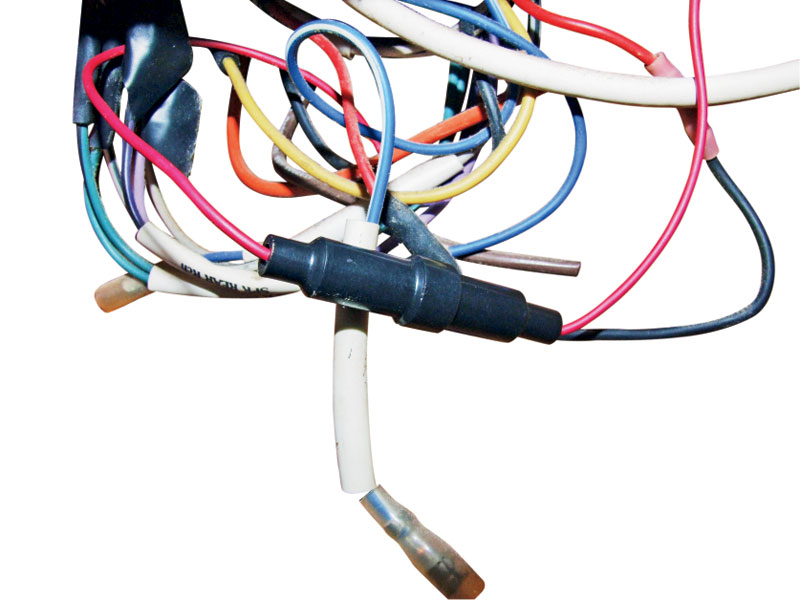The Main Principles Of Blue Sea Fuse Block
Wiki Article
The smart Trick of Blue Sea Fuse Block That Nobody is Discussing
Table of ContentsBlue Sea Fuse Block - QuestionsThe Main Principles Of Blue Sea Fuse Block Top Guidelines Of Blue Sea Fuse BlockOur Blue Sea Fuse Block StatementsBlue Sea Fuse Block - The FactsEverything about Blue Sea Fuse Block
Fuses are bolted in location between the bus bar and also the 2nd set of electrically isolated bolts. With this installation you can attach the watercraft's different high-current circuits, such as a windlass, bow thruster, high-output alternator, the DC panel, etc, to the isolated screws. The various integrates are sized according to the current-carrying ability of the conductors bolted to them.Some circuits will certainly still require to bypass the seclusion switch to ensure that they might be left on when the rest of the watercraft is shut down. blue sea fuse block. These circuits usually include a bilge pump as well as any kind of charging tools (consisting of photovoltaic panels, possibly a wind generator, and the inverter if it additionally functions as a battery charger).
This belongs to the circuit layout we established for the complex instance boat in our Watercraft Electrics training course. The gadgets attached to the fuse block in the top right are all bypassing the seclusion button S1. If you register for Boat Electrics 101, you will discover exactly how to read such a layout and additionally just how to make one for your very own boat.
Top Guidelines Of Blue Sea Fuse Block

With DC circuits, the OCP is always positioned in the positive side of DC circuits. Note that some European boatbuilders set up merges and battery switches in the DC negative side and on the favorable side, but this is not recommended other than in some isolated (drifting) ground DC systems.
This point may be at the battery, the battery switch, the circulation panel, a subsidiary panel, some circulation bus bar, or other attaching factor. If the conductors in the brand-new circuit are no smaller sized than the conductor that feeds the new circuit's point of link, after that the OCP for the feeder conductor will sufficiently safeguard the brand-new circuit - blue sea fuse block.
Some Known Details About Blue Sea Fuse Block
Yet if the new circuit is not appropriately offered by overcurrent gadgets currently in area, extra protection is required at its factor of connection, i. e., at its resource of power. Positioning of merges in the positive conductor. Keep in mind exactly how a smaller fuse is utilized each time a smaller conductor is attached, Often area limits just how close an OCP device can be put to the resource of power.If they need to be set up in battery areas, they must be ignition safeguarded.) The question after that develops, how close is close enough? The common answer, from the ABYC, is within 7" (17. 5cm). The ABYC enables the following, which have been More hints tightened up in recent times: A conductor linked straight to a battery that is likewise "consisted of throughout its entire range in a sheath or room such as a conduit, junction box, control box or encased panel" have to have its overcurrent security "as close Full Article as achievable to the battery, but not to surpass 72 inches (1 - blue sea fuse block.
Gone is the blanket 72" allowance that used to be there. A conductor attached to a resource of power besides the battery (e. g., the battery switch, the distribution panel, or a few other factor in the DC circuits) that is likewise had in a sheath, and so on, should have its overcurrent protection "as close as achievable to the point of connection to the resource of power, yet not to exceed 40 inches (1.
All About Blue Sea Fuse Block
Provided that generators themselves are a source of power, it has actually been arguable whether these included generators needed OCP at the alternator itself."Cranking-motor circuits are not required to have overcurrent security.In the aquatic area, where cranking circuits may be long, this method might develop a hazard. It makes no sense to have any unguarded circuits on a boat.
In winter, the inrush present on a 12V starter electric motor may be as high as 1,500 amps; the cranking current might be as much as 200 amps. Commonly, cranking conductors are undersized also for the cranking existing, not to mention the inrush current. This circumstance does not position a security trouble per se, since these currents are endured for just a few seconds, so the conductors do not have time to fume sufficient to develop a fire danger.
The Best Guide To Blue Sea Fuse Block
If you desire to discover how to wire a watercraft, step-by-step in 56 video clip lessons, take a look at our Boat Electrics 101 training course. We made the program with absolute newbies in mind. As the electrical tons on boats increases, so also address does the intricacy of electric circuits as well as the capacity for brief circuits as well as electrical fires.
In the aquatic field, where cranking circuits might be long, this technique might produce a risk. If a cars and truck captures fire, the passengers can pull over as well as leap out. If a boat ignites, it is not so straightforward. It makes no sense to have any type of vulnerable circuits on a watercraft.
The Definitive Guide for Blue Sea Fuse Block

If you want to learn exactly how to wire a boat, detailed in 56 video lessons, have a look at our Watercraft Electrics 101 course. We made the training course with absolute novices in mind. As the electric load on boats boosts, so too does the complexity of electrical circuits and also the possibility for brief circuits as well as electrical fires.
Report this wiki page